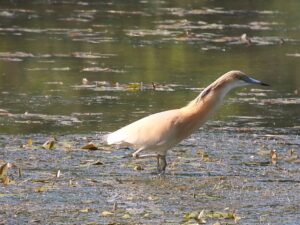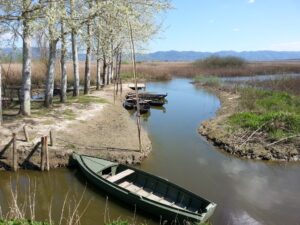Birding trips from Florence
Just outside Florence, many delightful natural areas offer exceptional opportunities for birdwatchers and nature photographers.  The Parco delle Cascine, 250 acres on the right bank of the River Arno, was created centuries ago by the Medici as a private hunting ground. Now a public park, Cascine is crossed by several fine birding paths where you can spot green and great spotted woodpeckers, tawny owl, hoopoe, Eurasian nuthatch, serin, white and gray wagtails, and an array of colorful tits.
The Parco delle Cascine, 250 acres on the right bank of the River Arno, was created centuries ago by the Medici as a private hunting ground. Now a public park, Cascine is crossed by several fine birding paths where you can spot green and great spotted woodpeckers, tawny owl, hoopoe, Eurasian nuthatch, serin, white and gray wagtails, and an array of colorful tits.
Fucecchio Marsh is Italy’s largest inland wetland, a complex mosaic of reedbeds, open water, wet woodland, and cultivated land covering about 4,500 acres. This wetland is very important of both wintering and breeding waterbirds. More than 200 species of birds can be observed here throughout the year. The marsh is a critical site for breeding ardeids, including little, cattle, and great white egrets and night, squacco, purple, and gray herons. The famous colony here is a veritable “city of herons,” with thousands of birds nesting.
 Le Balze is a fascinating area in the Upper Valdarno valley between Florence and Arezzo. This is the landscape glimpsed in the background of da Vinci’s Mona Lisa, beautiful geological structures of stratified sand and clay of a peculiar yellow-ocher color, particularly warm-hued when the formations are lit by the rays of the sun. Cultivated and abandoned fields, small wetlands, shrubland, and small woodlands are among the great range of habitats here and their rich variety of resident birds, mammals, and insects. Hoopoe, crested lark, corn bunting, common redstart, and zitting cisticola are among the birds you can expect to see. Small colonies of colorful bee-eaters are present every year. Common cuckoo and common nightingale are usually easy to hear in the right season, but as always, are harder to glimpse.
Le Balze is a fascinating area in the Upper Valdarno valley between Florence and Arezzo. This is the landscape glimpsed in the background of da Vinci’s Mona Lisa, beautiful geological structures of stratified sand and clay of a peculiar yellow-ocher color, particularly warm-hued when the formations are lit by the rays of the sun. Cultivated and abandoned fields, small wetlands, shrubland, and small woodlands are among the great range of habitats here and their rich variety of resident birds, mammals, and insects. Hoopoe, crested lark, corn bunting, common redstart, and zitting cisticola are among the birds you can expect to see. Small colonies of colorful bee-eaters are present every year. Common cuckoo and common nightingale are usually easy to hear in the right season, but as always, are harder to glimpse.
“My husband, daughter and I spent an amazing day outside of Florence with Marco. We would have never found these spots on our own. Husband and I added 22 birds to our life list and more important we saw close to 50 species” – Happy Customer from TripAdvisor
